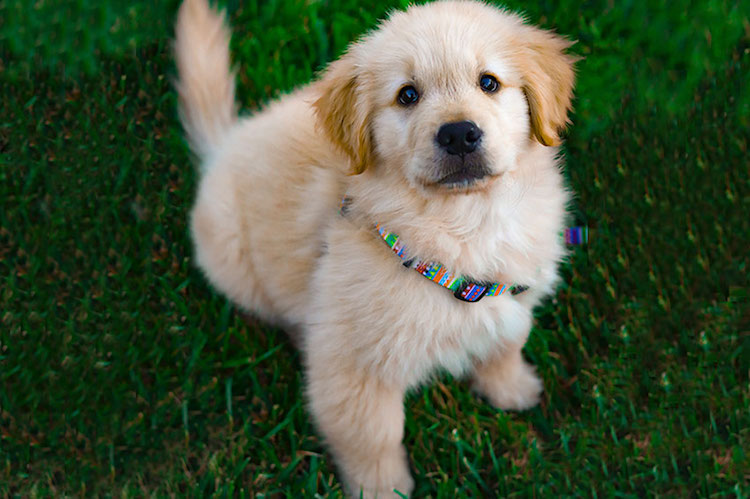How to Toilet Train a Puppy
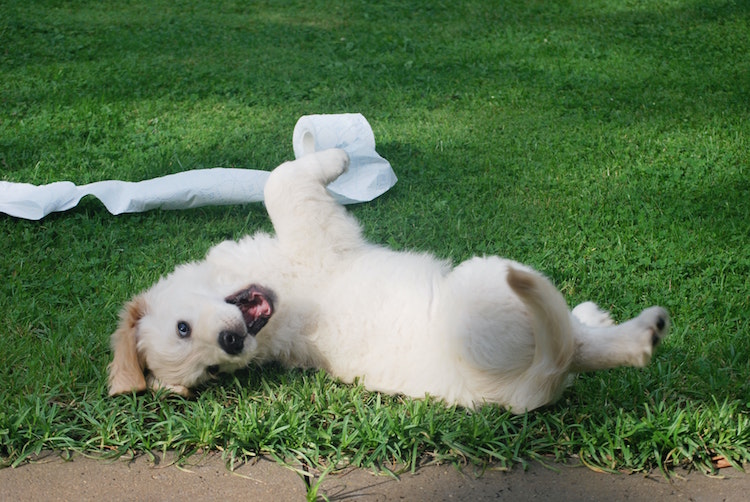
When it comes to toilet training your puppy, consistency, patience, and positive reinforcement are the keys to achieving it. This process aims to instill good habits and foster a loving bond between you and your new furry companion.
It usually takes around 4-6 months to fully toilet train a puppy, but some puppies might take up to a year. Just keep in mind that smaller breeds have smaller bladders and higher metabolisms, so they’ll need more frequent outdoor trips. And if your pup was used to a different living situation before, it might take some extra work to break old habits and establish good ones.
Don’t stress if there are a few accidents along the way! Setting up a routine that involves taking your puppy out as soon as they indicate the need to go and rewarding them can help them learn.
When to Start Puppy Toilet Training
Puppies should be toilet-trained between 12 and 16 weeks of age, when they can control their bladders and bowels. When it comes to how long puppies can hold their bladder, a good rule of thumb is that they can control it for about the same number of hours as their age in months. For example, a 6-month-old pup can usually manage around 6 hours before needing a toilet break.
It is important to remember that each puppy is an individual and that timing may differ. Some puppies might need to go out more frequently, while other puppies can hold it for longer periods. And let’s not forget, even adult dogs shouldn’t be expected to hold it for more than 10-12 hours at a time.
Toilet training may take longer if you bring home a puppy older than 12 weeks, especially if they have gotten used to eliminating in a cage (probably even eating their own waste as well). In this case, you will need to recondition your puppy’s behaviour by using positive reinforcement techniques such as encouragement and rewards.
Create a Puppy Toilet Training Schedule
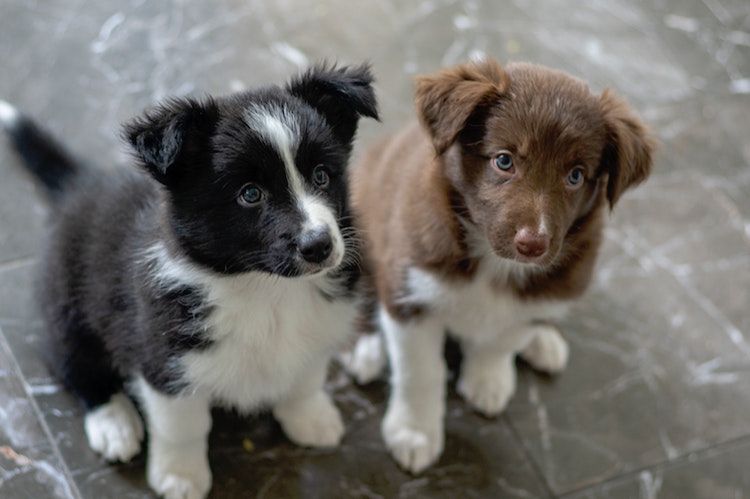
Having a regular schedule is essential for your puppy’s well-being. By following a consistent routine, your puppy will learn when to eat, play, and do their business. As soon as your puppy learns to go outside for their bathroom needs, you can gradually allow them more freedom to move about in the house.
Here are some guidelines to follow when toilet training your puppy:
1. Establish a regular feeding routine
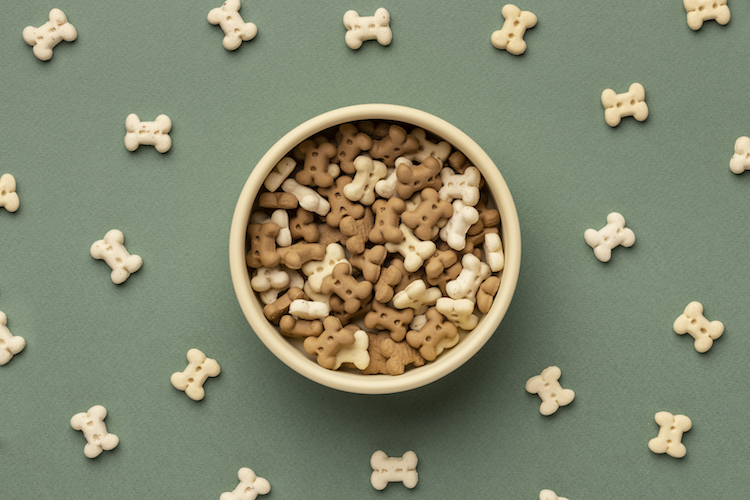
Puppies should be fed two to three times a day, depending on their age. Feeding your puppy at the same time every day will help them do their business at consistent times, too, making house training easier both for you and your puppy.
2. Schedule regular toilet breaks
This means taking your puppy out immediately after they wake up, during and after playing, and after eating or drinking, at a minimum interval of every two hours. Don’t forget to take your puppy outside the last thing at night before bedtime. By taking your puppy outside frequently for toilet breaks, you can help prevent accidents.
3. Choose a specific spot for toilet breaks
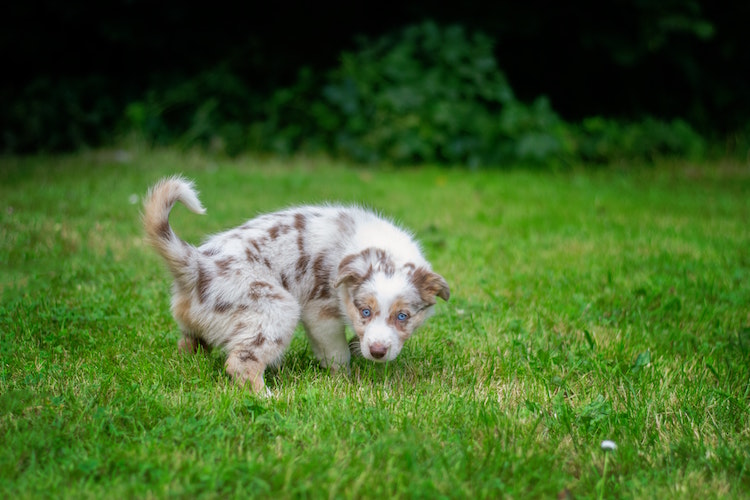
Whenever your puppy needs to go toilet, take them on a leash to the same spot. This will help them recognise and develop an association with the location. While your puppy is doing its business, use a consistent word or phrase that will help them relate the action with the word.
4. Take your puppy outside until they are fully toilet trained
This could mean taking your puppy outside or to a designated toilet area up to a dozen times per day. If you have a job, make arrangements such as bringing your puppy to a dog daycare or hiring a dog sitter to keep up with the toilet training schedule. The sooner your puppy learns where they are allowed to do their business and where they are not, the sooner you can say goodbye to messy accidents.
5. Use positive reinforcement
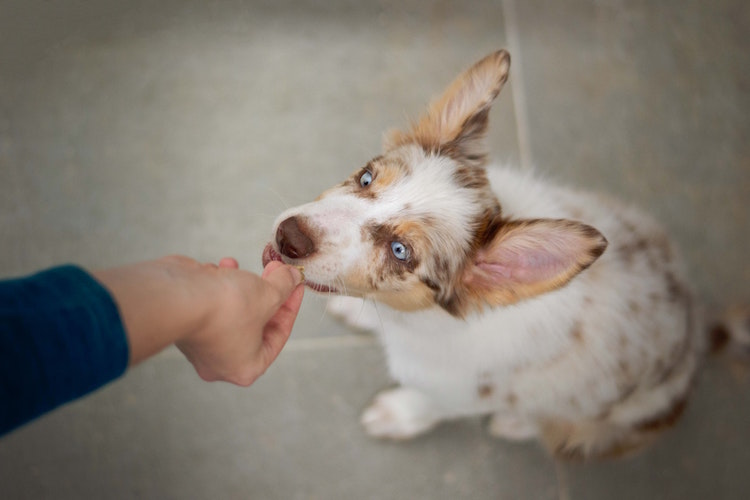
After your puppy has relieved themselves outside, reward them immediately with a praise, a treat or extra playtime. This helps reinforce the connection between the designated spot and toilet breaks.
What About Night Time Puppy Toilet Breaks?
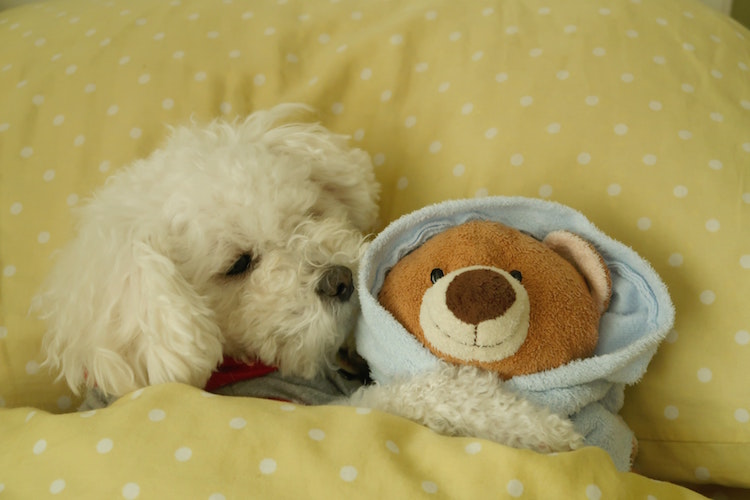
Most puppies can sleep for around seven hours without needing a bathroom break. If your puppy wakes you up during the night, don’t get angry at them, as they may mistake it for playtime and have difficulty falling back asleep. Turn on minimal lights, avoid playing or talking to your puppy, take them to the designated toilet break spot, and then put them back to bed.
Observe and Supervise Your Puppy
Make sure your puppy doesn’t have a chance to soil in the house; keep an eye on them when they are indoors. Observe your puppy’s signals and rhythms carefully. In some puppies, playing or getting excited can result in them needing to go for a poo, while others might simply stop mid-play to pee, and continue playing.
Confine When You Can’t Supervise
When you are unable to supervise your puppy, it is crucial to limit their space to a small area that they will not want to eliminate in.
- The area should be just large enough for your puppy to lie down, stand up, and turn around. If it is too large, your puppy will feel that it’s OK to use one corner for elimination and then happily settle down away from the mess. You can use baby gates to block off a section of a bathroom or laundry room.
- You may also want to consider crate training your puppy (remember to use the crate humanely). If your puppy has been confined for a few hours, take them directly to their designated toilet break area as soon as you return.
Signs Your Puppy Needs to Go Toilet
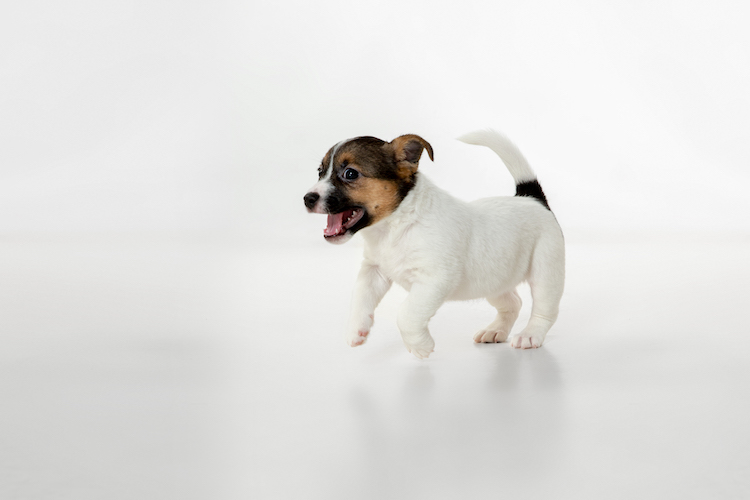
When your puppy displays behaviour such as circling, excessive sniffing around, whining, barking, restlessness or scratching at the door (if they are not confined), it’s a sign that they need a toilet break. Take them outside immediately to their designated bathroom spot on the leash. Once your puppy is done, praise and reward them with a treat.
Consider bell training your puppy so that they can communicate their need to go outside, which can prevent cues from being overlooked.
Monitor Your Puppy’s Diet
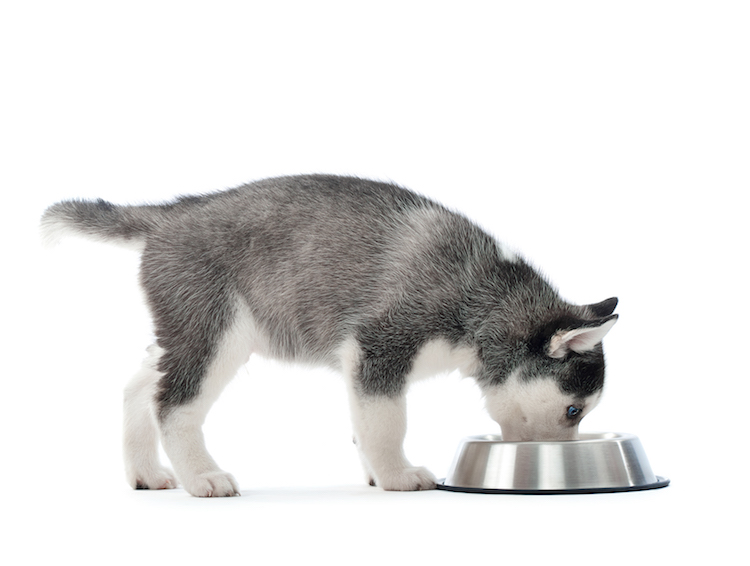
Due to their immature digestive systems, puppies require careful management of their diets. It is recommended to feed your puppy three small meals per day and select the highest quality puppy food. To determine whether the diet is appropriate for your puppy, it’s best to examine their stool regularly. If your puppy’s stool often appears bulky, loose, and has a strong odour, consult your veterinarian to determine if a diet change is necessary. Avoid overfeeding your puppy, as it can also lead to diarrhea, which can complicate the puppy toilet training process.
Dos and Don’ts of Puppy Toilet Training
When toilet training your puppy, keep in mind the following dos and don’ts:
- Don’t punish your puppy for accidents as it will only cause stress and anxiety.
- Clap loudly if you catch your puppy doing their business indoors, this is to let them know it is unacceptable behaviour. Then call them or gently lead them outside by the collar to their usual toilet break spot. Praise them or give them a small treat once they finish there.
- Do not react with anger by yelling if you find evidence of an accident but did not catch your puppy doing it. Punishing your puppy by rubbing their nose in the spot, scolding them, or any other form of punishment will only make them fearful of you or reluctant to eliminate in your presence.
- Consider staying outside with your puppy longer, as they may need extra time to explore and do their business.
- Use an enzymatic cleanser to clean up accidents as it minimises odours that might attract the puppy back to the same spot.

In order to minimise the number of accidents, it is extremely important that you use these supervision and confinement procedures. Allowing your puppy to eliminate frequently indoors will cause confusion and delay the toilet training process.
Dealing with Puppy Toilet Training Problems
It’s common for puppies up to a year old to have accidents during toilet training, and these can happen due to a variety of reasons, such as incomplete training or changes in the environment.
When accidents occur, it’s important to continue with the toilet training process. However, if the accidents persist, it may be necessary to consult a veterinarian to rule out any underlying medical issues that could be affecting the puppy’s ability to learn and follow through with toilet training.
Need to take your puppy for its training classes? Or a ride to your local pet store to grab some dog treats? JoJo Pets can help. JoJo Pets, a pet taxi service in Malaysia, provides safe and timely pet transportation to pet clinics. Let us know if you have any questions. Book a ride with us today!
JoJo Pets also offers cashless payment with their JoJo Wallet, including all major e-wallets, credit/debit card as well as online banking.
Download the JoJo Pets app today for exclusive news and offers at https://jojo-pets.com/
